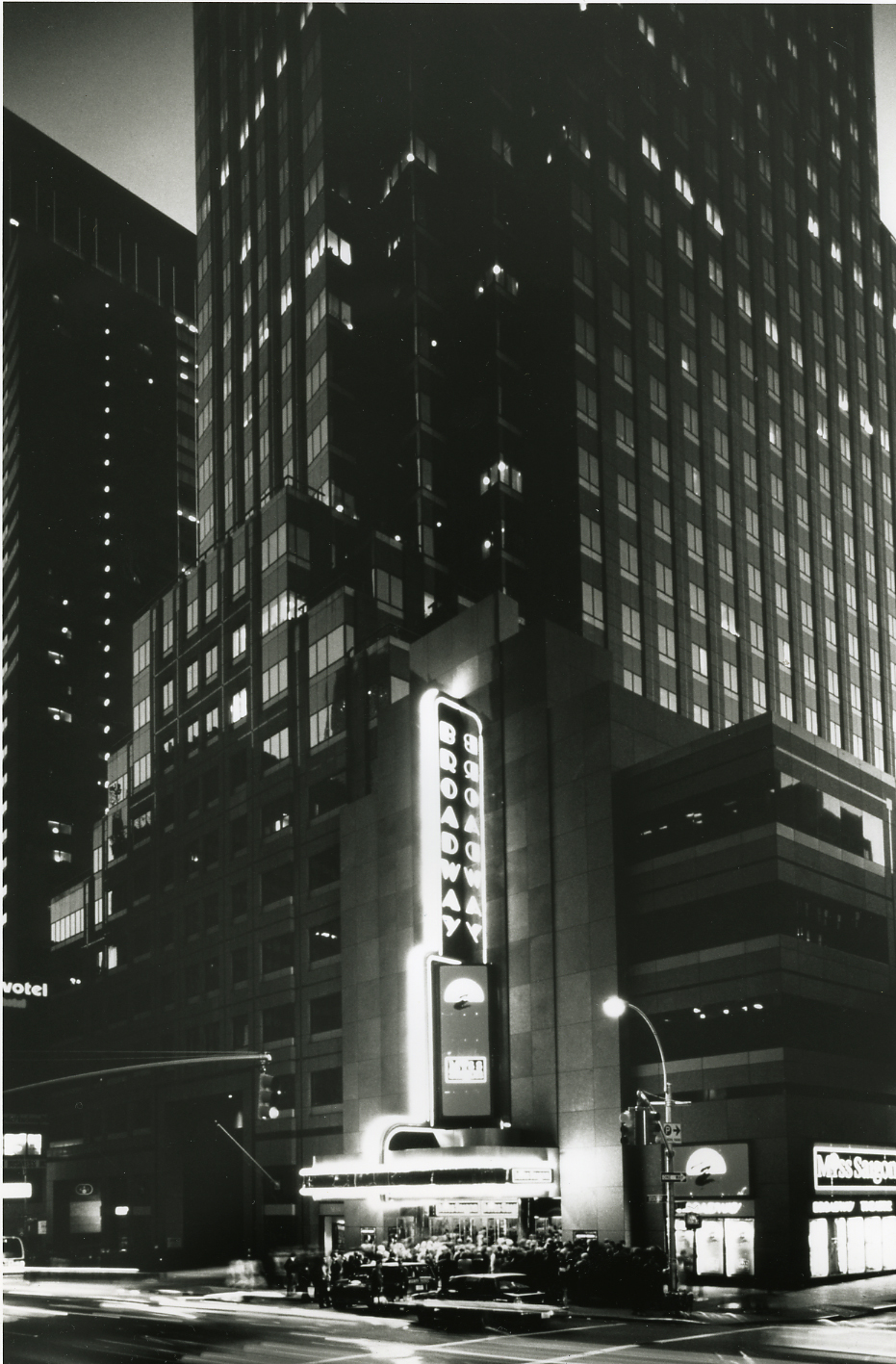
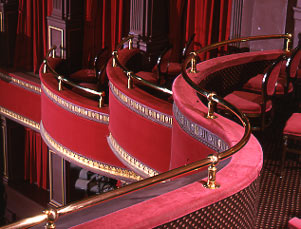
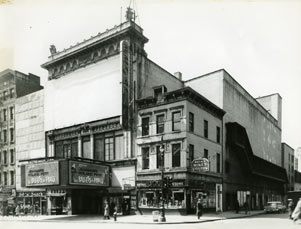

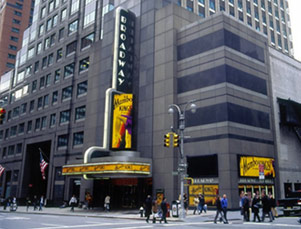
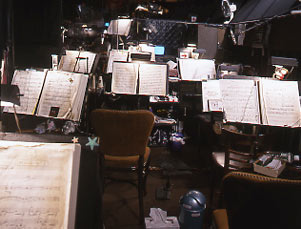
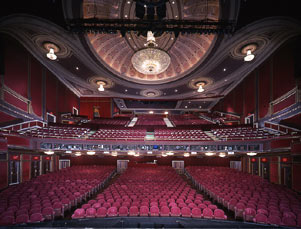
NOW PLAYING
WEST SIDE STORY
West Side Story, the most exciting musical theater masterpiece of the 20th century.
The most visionary theatrical talents of the 21st century.
Is there any wonder it’s “the most eagerly-awaited production of the new season”? (NY Post)
When four theatrical giants — Jerome Robbins, Leonard Bernstein, Arthur Laurents and Stephen Sondheim — created West Side Story, it was immediately hailed as an "indisputable, boundary-busting masterpiece” (The New York Times) that “explodes every imaginable idea of what a musical can be” (New York Magazine). Now, three of the most daring theater-makers of our time — director Ivo van Hove (A View From the Bridge and The Crucible), choreographer Anne Teresa de Keersmaeker, and designer and frequent Van Hove collaborator Jan Versweyveld — offer a radical, thrilling new interpretation of this iconic work, with extraordinary dancing, breathtaking vision, and 23 young, brilliantly gifted performers all making their Broadway debuts. Don’t miss this opportunity to see a landmark in musical theater history as if for the very first time.
West Side Story Show Tickets | West Side Story Show Schedule
HISTORY
The Broadway Theatre is one of only five playhouses that front on the street named Broadway. It opened in 1924 as B. S. Moss’s Colony, a premiere film house. The most notable film that played there in the early years was Walt Disney’s Steamboat Willie which opened in 1928, and introduced American audiences to an adorable rodent named Mickey Mouse. The theatre went “legit” from 1930 to 1934, when it was re-christened the Broadway. From 1934 to 1940, the house was once again dedicated to motion picture exhibition, and offered the premiere of Disney’s Fantasia in 1939. In 1940, however, it returned to legitimate stage production and, except for a brief stint as a Cinerama movie theatre in the 1950s, has remained in the business of showcasing live theatre ever since.
ARCHITECTURE
B. S. Moss commissioned architect Eugene DeRosa to design the Colony as part of his chain of movie theatres, many of which also housed vaudeville. The large size of the theatre (1,765 seats) made it ideal for musical comedies, and its large stage, originally built to accommodate an orchestra to accompany silent films, proved large enough for aircraft. The original façade (like the interior) was built in the Italian Renaissance style, and then resurfaced in polished granite when a skyscraper was constructed above the theatre in 1991.
Spotlight on Broadway: Broadway Theatre from Spotlight on Broadway on Vimeo.
Access Information
Theatre is not completely wheelchair accessible.
Shubert Audience Services
The Broadway Theatre provides accommodations for patrons who are blind, deaf, partially sighted, and/or have hearing loss. The theatre provides infrared assistive listening devices for every performance at the theatre. In addition, beginning four weeks after a show’s official opening night performance, hand-held audio description devices and hand-held captioning devices are available, and there is unlimited access to downloadable audio description and/or captioning for personal mobile devices free of charge. (Hand-held devices are limited, although additional devices can be obtained with at least twenty-four hours’ notice.) If you have questions, contact Shubert Audience Services at 212-944-3700 or audienceservices@shubertorg.com. There is also a representative at the Shubert Audience Services kiosk at every performance to assist any patron with any of our devices, software, or technology.
Accessibility by Seating Section
Orchestra: Seating is accessible to all parts of the Orchestra without steps. Wheelchair seating is located in the Orchestra only.
Mezzanine (second level): 2 flights of stairs (up 31 steps) 11 steps/landing/9 steps/landing with restrooms/3 steps/landing/8 steps. Please note, once on the Mezzanine level there are approx 2 steps up/down per row. Entrance to Mezz. is behind Front Mezzanine row F and in front row A of rear mezzanine.
Handrails: Available at the end of every stepped seat row in the Mezzanine.
Wheelchair | Companion Seat Locations:
Orchestra: F18 | F12 - 16; Q27 | Q21 - 25; Q28 | Q22 - 26; Q101 | Q102 - 104; S113 | S110 - 112; S27 | S21 - 25; S28 | S22 - 26
Aisle Seat with Folding Armrest | Companion Locations:
Orchestra: I24 | I22; J23 | J21; J24 | J22; L27 | L25; L28 | L26; P114 | P113; P28 | P26
Elevators/Escalator
None Available
Payphone
Located in lobby.
Restroom
Wheelchair accessible (unisex) restroom is located on lobby level.
Water Fountain
Located in the restrooms.
Theatre Policies
The use of cameras, recording devices, cell phones, beepers, and other electronic devices during the performance is prohibited. Everyone attending a performance must have a ticket. Latecomers will be seated at the discretion of management. Wheelchair and mobility-impaired seating is intended for patrons with mobility disabilities. Children under the age of four years will not be admitted. No outside food or beverage permitted, unless medically necessary. No weapons permitted on the premises.
THEATRE SPECS
Broadway Theatre
1681 Broadway
Between West 52nd and 53rd Streets
New York NY 10019
| Year Built | 1924 | |
| Seating Capacity | ||
| Orchestra | 909 | |
| Front Mezzanine | 250 | |
| Rear Mezzanine | 584 | |
| Boxes | 20 | |
| Total | 1763 | |
| Included in Numbers Above: | ||
| Wheelchair | 7 | |
| Aisle Transfer Arm | 18 | |
| Theatre Dimensions | |
| Proscenium Opening: | 46' 6" |
| Height of Proscenium: | 27' 0" |
| Depth to proscenium: | 54' 3" |
| Depth to front of stage: | 57' 4" |
| Stage Type: | Proscenium |














